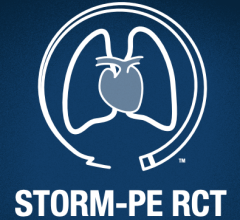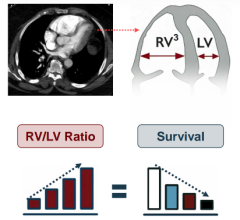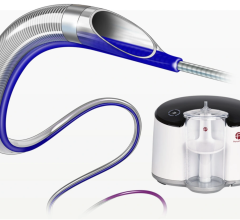March 31, 2011 – Deep vein thrombosis, or DVT is more than just a one-time complication from a long plane ride. The Society of Interventional Radiology wants individuals to know the risk factors for this very serious condition, which can lead to post-thrombotic syndrome, pulmonary embolism, permanent damage to the leg and even death. "March is DVT Awareness Month, and there is a need to alert people that deep vein thrombosis—sometimes called Economy Class Syndrome—is not just a one-time complication from taking a long plane ride,” said Suresh Vedantham, M.D., FSIR, an interventional radiologist and professor of radiology and surgery at Washington University School of Medicine in St. Louis, Mo. “It affects men, women and the elderly—even children—whether or not they travel." He also noted that common risk factors for DVT include prolonged immobility, recent surgery or major injury, hormone therapy or use of birth control pills, current or recent pregnancy, cancer and obesity. The most serious complication of DVT is when a blood clot breaks off and travels to the lung where it can become trapped, blocking the oxygen supply, causing heart failure. This is known as a pulmonary embolism, which can be fatal. Tennis star Serena Williams recently suffered a pulmonary embolism after being treated for an injury and becoming inactive. "This is frightening proof that these conditions can occur without warning,” Vedantham said. “Early recognition and treatment are essential for survival." "It is also important for people to know that under-recognized and extremely serious complications, such as post-thrombotic syndrome (or PTS), often occur even when DVT is treated with blood-thinning drugs (or anticoagulation)," said Vedantham. "Blood-thinning drugs are an important part of the treatment; however, contrary to popular belief, they do not actively dissolve the clot; they just prevent new clots from forming. Unfortunately, the clotted vein often suffers permanent damage and a loss of function, which results in long-term disability for the individual.” "This is a disease that needs to be thought of as a chronic condition," he said. "And by undertaking pivotal research and working with other physicians to increase awareness, interventional radiologists appear likely to transform the treatment of deep vein thrombosis and its two main complications – pulmonary embolism and post-thrombotic syndrome or PTS." Studies show that people who have an episode of DVT are at significant risk for developing more blood-clotting episodes and post-thrombotic syndrome. This causes chronic leg pain, swelling, fatigue, difficulty walking, major interference with physical activity and a person's ability to work productively. Post-thrombotic syndrome occurs because the clot remains in the leg. "While the impact of post-thrombotic syndrome has largely been viewed in relation to working-age adults, prospective studies have shown that children with deep vein thrombosis are also at significant risk for the development of post-thrombotic syndrome and its related disabilities," Vedantham said. A recent study done by interventional radiologists in partnership with medical thrombosis physicians, found that adolescents with DVT who were treated with clot-removal therapy experienced a very low frequency of post-thrombotic syndrome. "There are new techniques where clot-busting drugs are infused directly into the clot under imaging guidance through a catheter-device that quickly distributes the drug within the clot using a pulsing fluid spray or a curved wire," Vedantham said. "The clot then dissolves, sometimes with the help of a device that vacuums it out of the vein, restoring normal blood flow and resolving symptoms.” Recognizing this potential, the National Institutes of Health is sponsoring the ATTRACT study, a $10 million, multicenter randomized trial that is being performed in 50 hospitals nationwide. The study will address the public health threat of post-thrombotic syndrome by determining if image-guided clot-busting treatments can safely prevent PTS and improve long-term quality of life. Vedantham is the lead investigator. For more information: www.SIRweb.org
If you enjoy this content, please share it with a colleague
Interventional Radiologists Take Lead on Reducing Disability From Dangerous Blood Clots
Related Content
Nov. 3, 2025 — Penumbra, Inc. has announced additional results of the STORM-PE randomized controlled trial (RCT), which ...
Oct. 27, 2025 – Penumbra, Inc. has announced the results of the STORM-PE randomized controlled trial (RCT), which found ...
Sept. 2, 2025 — Imperative Care, Inc. has announced U.S. Food and Drug Administration (FDA) 510(k) clearance of its ...
June 16, 2025 – Penumbra, Inc. recently announced the completion of enrollment in the STORM-PE clinical trial. This ...
March 24, 2025 — Imperative Care, Inc. recently announced U.S. Food and Drug Administration (FDA) 510(k) clearance of ...
Penumbra recently launched its Element Vascular Access System, a laser-cut hypotube sheath designed for venous ...
Nov. 5, 2024 —Penumbra, Inc. recently announced new data that demonstrate patients with intermediate-risk pulmonary ...
Sept. 24, 2024 — Thrombolytic Science, LLC (TSI) has announced that the U.S. Food and Drug Administration (FDA) has ...
Sept. 5, 2024 - Prolocor, Inc. and Slingshot Biosciences recently announced the publication in Bioanalysis of the ...
January 16, 2024 — Penumbra, Inc., a thrombectomy company, has recently secured CE Mark (Conformité Européenne) for its ...


 November 07, 2025
November 07, 2025 









